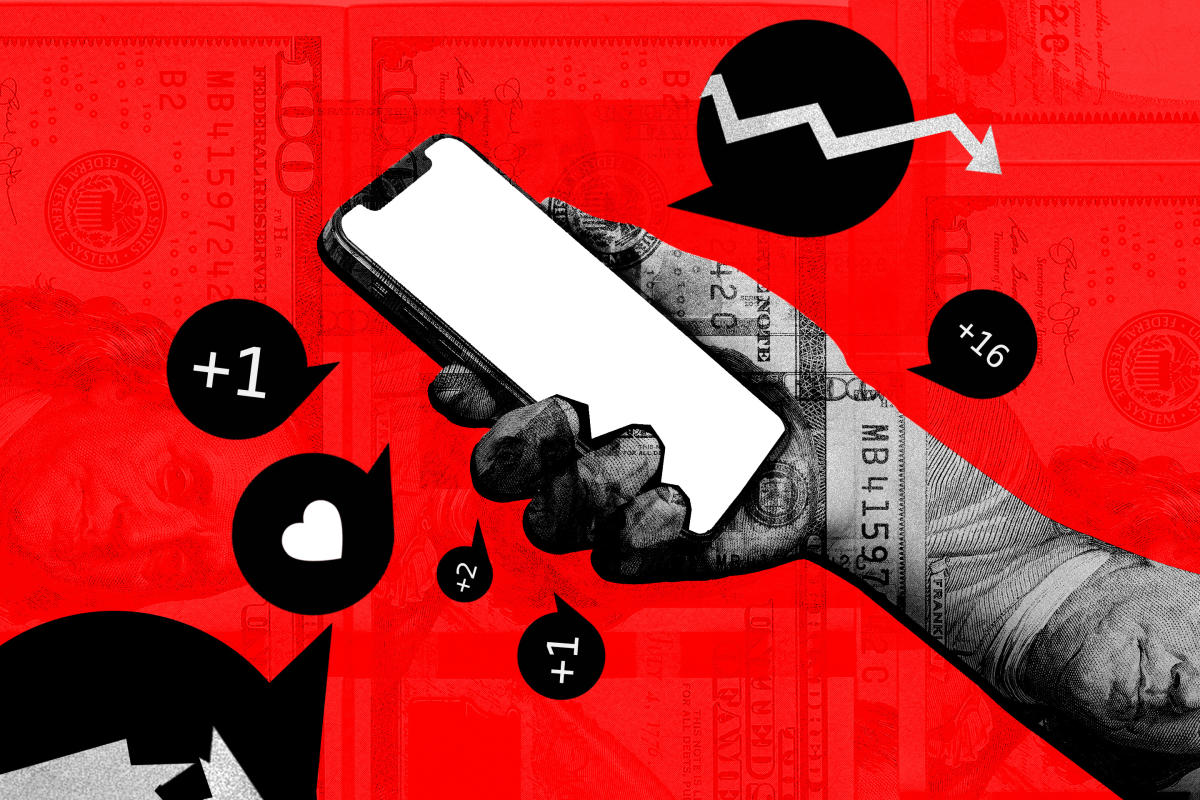Personal Finance
Study Finds Twitter Chatter Fueled SVB Collapse — and Other Banks Are at Risk

Is it possible that conversation on Twitter helped spur the run on Silicon Valley Bank (abbreviated SVB) that led to its collapse?
That’s the premise of a new working paper from a group of economists who analyzed data from Twitter and bank stocks — and ultimately discovered that social media chatter did indeed amplify the risk.
As rising interest rates and a tough economic climate prompted many of SVB’s startup and tech industry customers to withdraw their deposits, the bank was forced to sell investments at a huge loss to cover demand. Word of those losses traveled quickly, and spooked depositors withdrew $42 billion from the bank in just 24 hours, according to Reuters. Many blamed the speed and intensity of online chatter about SVB’s weakness for the bank’s swift demise.
The five researchers, who are affiliated with universities in the United States, Spain and France, also found that negative tweets during the March run on SVB preceded declines in bank share prices on the stock market. And given the fact that nearly everyone uses social media these days, it’s likely not a contained issue.
“Our analysis suggests that other banks face similar risks,” the researchers wrote.
How did Twitter fuel the run on SVB?
In the immediate aftermath of SVB’s collapse last month, the crisis quickly earned the accolade of “the first Twitter-driven bank run.”
Other recent bank runs, like those during the last financial crisis, took place just as social media was getting started (Twitter was founded in 2006, only two years before the implosion of Washington Mutual and Wachovia). But SVB was different because many depositors were involved in the venture capital industry, had strong networks with others in the industry — especially tech founders — and were very active on the now-very-well-established Twitter.
That created a perfect storm “unique to the social media era,” the researchers wrote.
“Discussion amplifies risk,” the paper’s lead author, J. Anthony Cookson, an associate professor of finance at the University of Colorado at Boulder, told the New York Times. Basically: Social media allowed SVB’s customers to communicate with each other extremely quickly, and that lightning-fast online discussion compounded the damage.
Are other banks at risk?
Social media isn’t going anywhere, and neither is its influence on the financial world. Just look at the short squeeze on GameStop orchestrated by r/WallStreetBets in 2021.
More banks could be susceptible to the same phenomenon, the researchers conclude. They say that’s especially concerning because of how easily inaccurate information can spread online: “Given the increasingly pervasive nature of social communication on and off Twitter, we do not expect this risk to go away,” they wrote.
Thankfully, most consumers don’t need to worry about whether their deposits are safe, even in the social media age. The Federal Deposit Insurance Corporation (FDIC) insures bank deposits up to $250,000 per account type, per depositor, and it expanded that coverage for depositors affected by the SVB collapse.
Take control of your financial future by investing in Gold
Achieve greater financial security by providing effective solutions that can help protect your wealth. Click below to start investing today!
Invest in Gold
More from Money:
Are Your Bank Deposits Covered by FDIC Insurance? Here’s How to Know
Bank Failures Explained: Answers to 6 Big Questions About What Happened and What’s Next
Most Americans Still Trust Banks Despite Recent Collapses
© Copyright 2023 Money Group, LLC. All Rights Reserved.
This article originally appeared on Money.com and may contain affiliate links for which Money receives compensation. Opinions expressed in this article are the author’s alone, not those of a third-party entity, and have not been reviewed, approved, or otherwise endorsed. Offers may be subject to change without notice. For more information, read Money’s full disclaimer.
Read the full article here

-

 Side Hustles6 days ago
Side Hustles6 days ago4 Ways Content Can Make or Break the Customer Experience
-

 Passive Income4 days ago
Passive Income4 days agoWhy Emotional Intelligence Is the Key to High-Impact Leadership
-

 Side Hustles6 days ago
Side Hustles6 days agoHow to Build a Legacy of Leadership in Your Business in Six Proven Strategies
-

 Personal Finance3 days ago
Personal Finance3 days agoTop personal finance New Year's resolutions for 2025
-

 Side Hustles5 days ago
Side Hustles5 days agoThe 5 Fears Every Entrepreneur Must Face — and Overcome
-

 Make Money6 days ago
Make Money6 days agoSafeguard Your Future by Avoiding These 7 Retirement Pitfalls
-

 Side Hustles5 days ago
Side Hustles5 days agoHow They Grew $200k to $3M Side Hustles After Being Laid Off
-

 Side Hustles4 days ago
Side Hustles4 days ago3 Key Ways to Train Your Franchisees


















